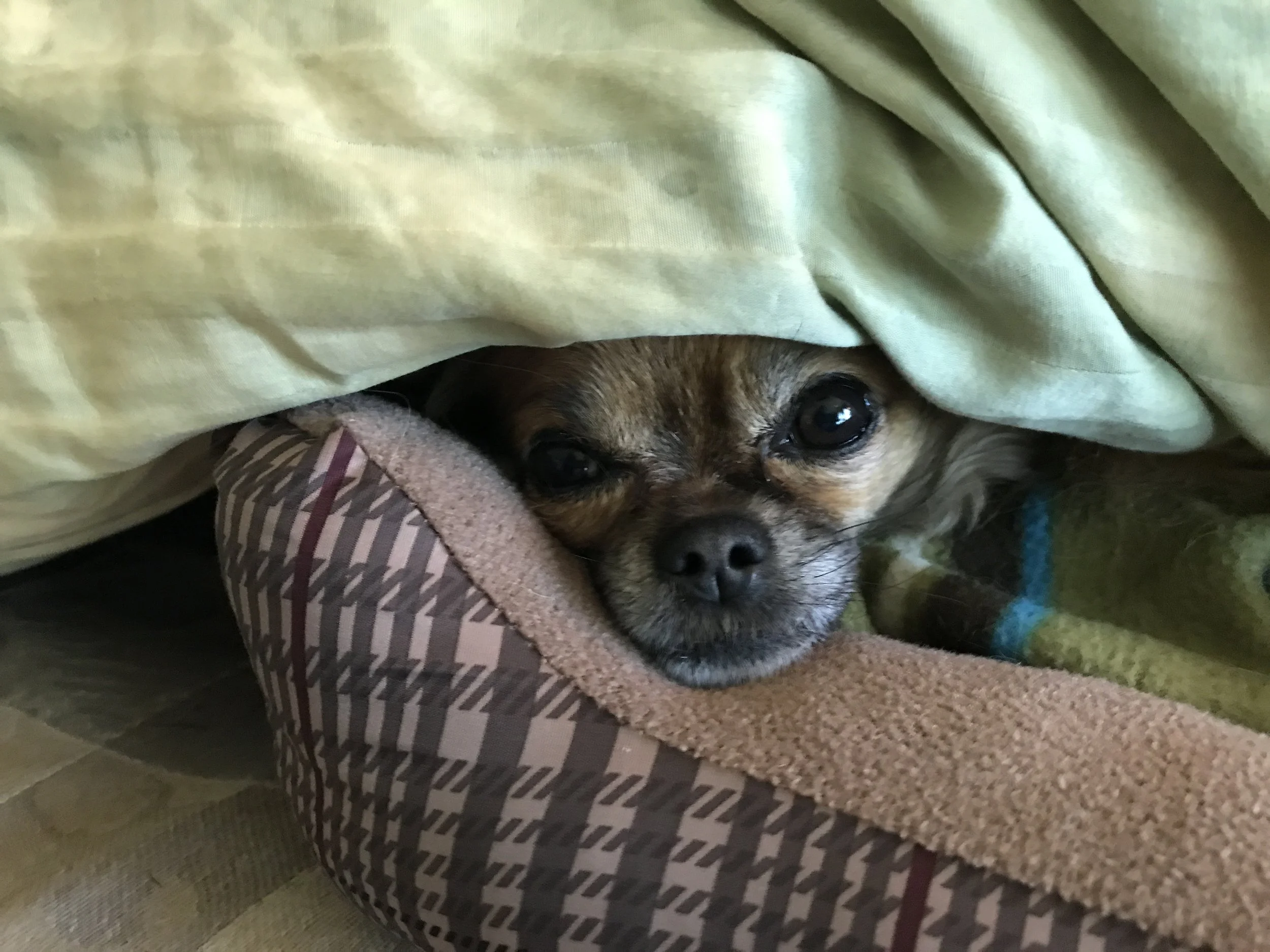Rescue Dog Separation Anxiety: Signs and Simple Solutions
This is Moe feeling quite secure. :)
Adopting a small rescue dog brings a lot of joy—and sometimes unexpected challenges. One of the most common struggles we face, when we rescue a pup, is separation anxiety. Dogs who’ve already lost so much might just fear being left behind again. Makes sense, doesn’t it? We humans are like that sometimes. Understanding and addressing this issue is vital for both your peace of mind and the happiness of your new furry friend.
Recognizing Separation Anxiety in Small Rescue Dogs
Common Signs of Separation Anxiety
Separation anxiety doesn’t look the same in every dog. Here are some of the most frequent signs small rescue dogs show:
Excessive barking or whining: Constant sound from your buddy when left alone, sometimes starting the moment you step out.
Destructive behavior: Chewing furniture, digging at doors, or scratching windows can be a plea for comfort.
House soiling: Even potty-trained dogs “do their business” inside, especially near doors.
Pacing: Repetitive walking or circling can signal stress.
Escape attempts: Some dogs work hard to break out of crates, rooms, or even the house itself.
Keep an eye out for any of these behaviors, especially if they begin when you’re leaving.
Why Rescue Dogs Are More Prone to Anxiety
Small rescue dogs often carry heavy baggage:
Previous trauma: Abuse or neglect can leave deep scars.
Abandonment: Dogs surrendered to shelters or found as strays may fear it will happen again. (Moe was found in a dog hoard. I doubt he received enough attention, not to mention attachment to a human being.)
Multiple rehomings: Bouncing between homes teaches dogs not to trust that someone will stay.
These experiences make small rescue dogs especially sensitive to changes and time left home alone.
Simple Solutions for Easing Separation Anxiety
Establishing a Consistent Routine
Dogs crave predictability. A set schedule can offer much-needed comfort. Moe and I can look at each other at this point and know what will happen next. ;) Try these tips:
Feed your dog at the same times each day.
Walk or play at regular intervals.
Say consistent "hellos" and "goodbyes"—keep greetings calm and low-key.
Stick to regular sleep and wake times.
( At 5:00 A.M, even weekends, Moe makes his way on top of me. I say, “Goo’ morning, goo’ morning, goo’ morning!” in a baby voice, cuz that’s what we do. ;) He knows it’s time to start our day, which starts with going outside!)
Using Safe Spaces and Comfort Objects
Your dog will feel more confident if they have a place to call their own. Make your home cozy and safe:
Use a crate or a quiet room as a safe haven. You will determine what is best for your new pup. This doesn’t apply to every rescue. Moe can’t be crated. He was rescued from a hoard. Who knows what his life included before he found me. You’ll learn right away if you can crate your little one.
Give your dog a soft bed or blanket that’s always available. Yes, there are dog bed, pillows and blankets throughout our home. That’s a given.
Leave behind a piece of clothing with your scent.
Keep favorite toys within easy reach. this one’s easy for me… Moe’s not a toy guy. He does however, love to play hide ‘n’ seek with my Peanut Butter Paw Frisbee Fetchers. Order some, see if your bud’s moved to hide the treat, before devouring the tasty morsel.
Gradual Desensitization Techniques:
Help your dog learn it’s okay when you leave. Start small and work up:
Practice short absences: Step out for just a minute, then return.
Add time slowly: Increase your absence by a few minutes each day.
Don’t make a fuss: Leave and return calmly so time apart seems normal. (You might struggle with this part of the process. I’m sure a lot of us do)
Pair departures with treats: Give a special treat or safe chew only when you leave.
Interactive Toys and Enrichment
A bored dog is a stressed dog. Keep little minds busy during alone time (This is another area in which you’ll want to experiment… some pups don’t like toys)
Puzzle feeders: Hide treats inside for your dog to sniff out.
Kong toys: Stuff with peanut butter or treats to encourage licking.
Tug toys: Durable ropes or squeakers for solo play.
Rotate toys: Fresh options keep things exciting.
When to Seek Professional Help
Knowing When to Consult a Trainer or Veterinarian
Some cases need expert attention. Watch for:
Escalating aggression or panic.
Injuries from escape attempts or self-harm.
Refusal to eat, even when home.
No improvement after several weeks of at-home strategies.
Out-of-control barking that disturbs neighbors.
Possible medical issues masked as anxiety.
A certified trainer or vet can rule out health problems and create a custom plan to help.
Let’s do a quick review:
Small rescue dogs with separation anxiety aren’t broken—they’re asking for love and patience. Spot the signs early. Build routines, safe places, and figure out fun stuff for your pup to do while you’re away. For tough cases, reach out to professionals. Progress takes time, but you and your rescue pup can find calm and confidence together. Every small step brings comfort and strengthens the bond you share. 💕 🐾 Don’t forget your Peanut Butter Paw Frisbees Fetchers from the Bakery.

